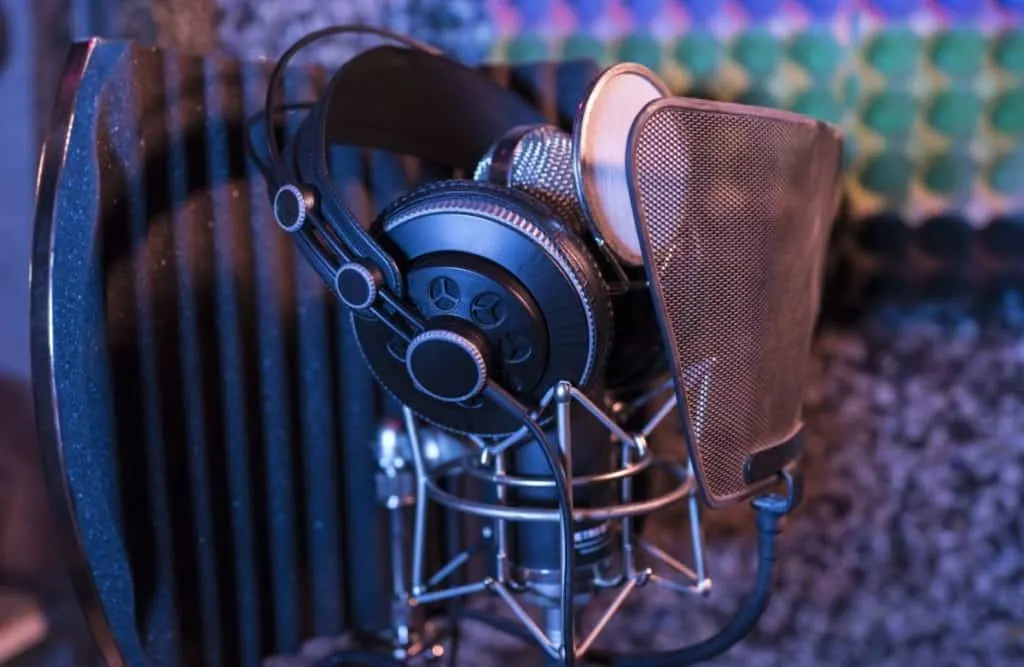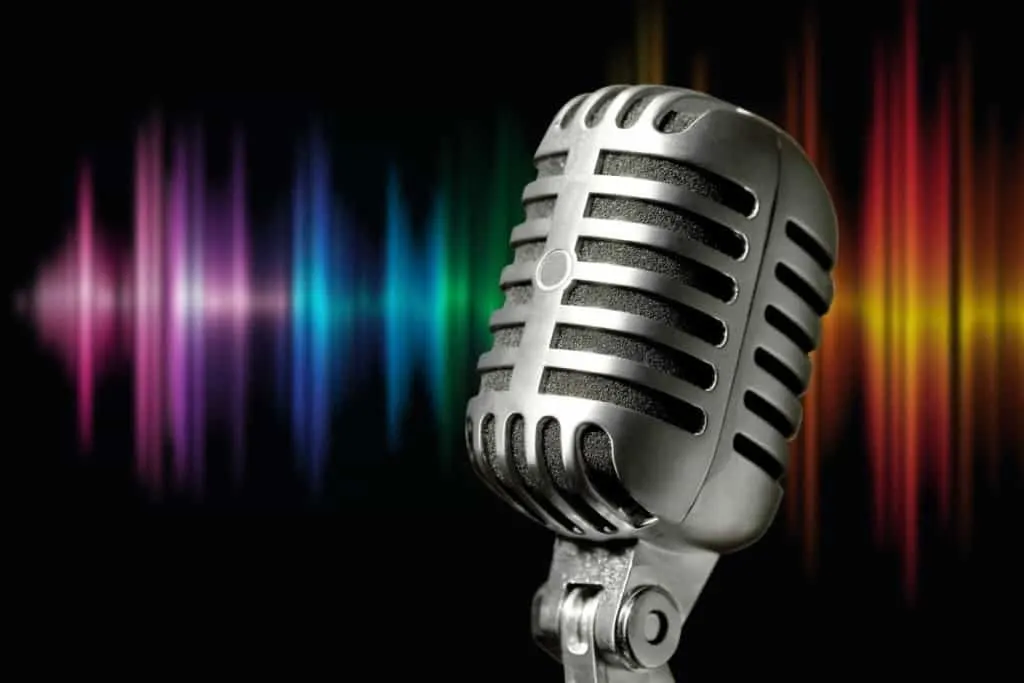Those of us who are into music-making and recording hear these terms all the time: phantom power and preamp.
So, what is the difference between phantom power and a preamp?
The difference between phantom power and a preamp is that Phantom power is an electrical current traveling through an XLR microphone cable to power up a condenser microphone. A preamp amplifies the signal once it arrives back.
It’s time to clear the mist and separate the terms once and for all.
Let me share my years of experience on a mixing desk and go a little further sharing some knowledge about the difference between phantom power and preamps.
Phantom power is for electrostatic microphones AKA condenser, the preamp on a mixing board might be 90% of the reason to buy it because it adds a particular color to each microphone differently.
It sounds great, but do you already know how to use it to get your microphone set up and the mixers in the studio? Let’s take a look and explain a few things in simple terms.

Phantom Power And Preamp Sources
Getting phantom power for your equipment is usually a very simple endeavor. Most of the gear you can get today at a random music store will grant you a source of phantom power. For example, most sound interfaces have that option as well as 90% of the mixers out there.
Now, the question is: do you also need a preamp to go with them and where can you get that preamp? Well, the good news is that nowadays most phantom power sources you find will also come with a built-in pre-amp so you can have a complete microphone set up.
In fact, most mixers can accommodate more than one phantom-powered microphone with a preamp for each. Here are some options:
- Mixers – Most mixers in the market will solve both needs for you with built-in preamp and phantom power. Depending on the price of the mixer and the quality of the preamp you’ll get a warmer, more natural sound or a smaller, more digitally-sounding recording. Phantom power sources are mostly the same everywhere.
- Sound Interfaces – Also known as DAC, these are the external units that usually have the ability to provide your condenser microphone with some phantom power and have a built-in generic preamp.
- USB Condenser microphones – Some condenser microphones come equipped with a built-in preamp and DAC and have USB connection straight to your computer. Buying one of these will completely solve the need for a preamp and phantom power (they get the voltage through the USB cable). The Audio Tecnica AT2020 is an amazing Condenser Microhone
- . Check it out here on Amazon.
This being said, it is true that the more you invest in your preamp, the better the audio quality you’ll get.
In fact, sound quality is the result of a chain of elements that is only as strong as its weakest link. This means that if you have a NEVE console with some of the best preamps in the world, a very expensive microphone set up and mixers but buy a very cheap DAC and phantom power external units, you will degrade the sound quality you invested so much money into.
Here’s an easy to understand video on what Phantom Power is.
Do You Need Phantom Power And A Preamp?
So, the question that follows to what is each and where to find them is if you need to pair phantom power with a preamp.
Well, your microphone set up will differ depending on what you are trying to do with it. Most high-end mixers provide both, but not all of them.
The signal you’ll get from the instrument (microphones, acoustic-electric instruments) is going to have a certain amount of volume straight from the source. You’ll very likely need to amplify that sound so that you won’t get any extra, unwanted noise in the signal. Also, preamps can help you shape the sound when they have a built-in equalizer like in big consoles. Let’s take a look at the main possible scenarios.
Condenser Microphones (Need Phantom Power)
Condenser microphones need phantom power to operate.
It is not optional to sound better, they won’t generate signal unless you feed them electricity.
The 48V going through the XLR cable comes back in the form of balanced audio waves through the same cable. This is the way condenser microphones create those warm-sounding mid-lows that we all love so much.
Some condenser microphones have a built-in preamp as well and this way the sound comes out of the microphone with a higher volume than it would otherwise.
Will this replace the need for an external preamp? Surely will, but it doesn’t replace the better sound you can get when plugging it to an amazing preamp.
Take a look at the video from the Stamp Sound Youtube Channel that accompanies this article.
You Can Subscribe To The Channel Here. It’s Free!
The entire microphone set up along with the mixers shall be what determines your final sound. The same way a built-in DAC on a USB microphone will get the job done, the built-in preamp on your condenser will, but adding better components to the chain will always improve sound quality.
The MXL Mic 770 is a great choice of condenser microphone. Take a look at it here.
Dynamic Microphones ( Do not Need Phantom Power)
To set things straight from the beginning, dynamic microphones do not need phantom power.
What they do need, more in fact than condensers, is a good preamp. Since dynamic microphones do not need electrical current to work, they do benefit hugely from a good preamp when in the studio.
The key to understanding this difference with the condenser family is that they are microphones created for different situations. Dynamic microphones are meant to be on a stage and that way usually also plugged to the preamp of a powered mixer.
The microphone set up in live situations is usually a microphone (either wireless or with an XLR cable) a mixer, its internal power amplifiers or out to a power amp and then to the speakers.
In this scenario, the preamp that you will likely use will be the mixer’s built-in with the EQ. Condenser microphones are not suitable for live situations (with the exception of the lavalier for conferences) because they are too sensitive to handle loud stage noises. On the other hand, and for the same reason, dynamic microphones need the preamp because they are less sensitive.
The most popular Dynamic microphone that you will find in every studio is the Shure SM-58. Take a look at this microphone here.
Here’s a great video explaining what a preamp is.
Instruments And Phantom Power
Can phantom power be applied to instruments?
Well, the general answer is no. That being said, few things make an acoustic guitar sound better than a condenser microphone.
Those instruments that can be plugged in using the line-in of mixers usually have a pre-amp built-in. Whenever you pick up an acoustic-electric and see the volume and tone knobs or even a graphic equalizer, you are seeing a built-in preamp. There are very few guitars out there that are passive acoustic-electric (some Gibsons especially).
Where do they get the power for the preamp? Well, you need to set them up with a 9-volt battery that powers the entire system so it can operate.
Without a built-in preamp, you would have to plug it into an external one like the Fishman Aura and other floor units. There is also a chance of having an active direct box to use as a preamp as well before hitting the mixer.

Mixers Vs Standalone Units
So, when in the need of phantom power and a preamp, which is the best choice to complete your microphone set up? I would say that there are pros and cons to them, let’s take a look.
- Mixer – A mixer or a sound interface with built-in preamps and phantom power can be a great solution. Depending on how much you spend on a mixer, will determine the results you will get. For example, buying a $99 mixer with preamps and phantom power can tell you a thing or two about the quality of the components used in it, right? With a mixer, you definitely get what you pay for.
- Standalone Units – Buying an external phantom power or preamp source is great because you can take it anywhere and always have a consistent sound with your microphone. On the other hand, if you already have a mixer and need to buy these external sources it can mean extra money and taking something else with you everywhere you go.
Both scenarios have pros and cons. You will very likely have to face them both as your musical/production career goes on.
Conclusion. Do You Need Phantom Power And A Preamp?
To make a final statement about phantom power and preamps:
- Do you need both? In the case of a condenser microphone yes, for dynamic ones only a preamp. Whether they are built-in or not, it’s the way to make the most out of your vocal takes.
Each artist and microphone set up is radically different and the tone of your voice or the taste in your productions will tell you which suits you the best.
Perhaps you want to create a warm vocal take to match wooden instruments and condensers are your thing. Maybe you are producing a podcast with dynamic radio-oriented microphones (like the legendary Shure SM7B) and need to focus on the mid-range with no phantom power needed, you check out the SM7B here on Amazon.
Most mixers in the world will solve this for you, it will just be a matter of taste and ear refinement until you find the one you love the most.
My advice to cover all aspects would be to purchase a good quality mixer and have the flexibility of all options available.
Whatever you decide enjoy creating your music.
